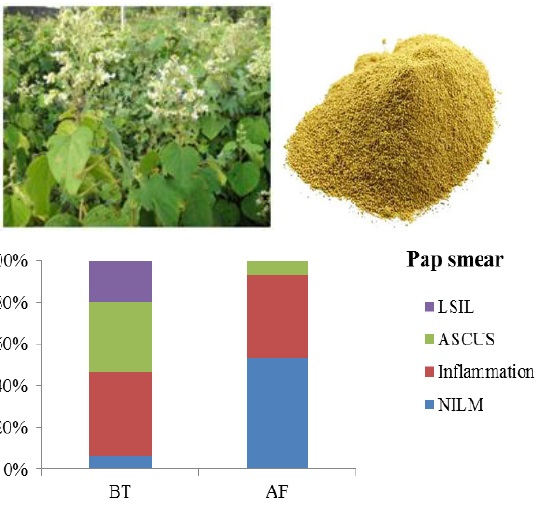Effect of Bhandira (Clerodendrum Viscosum) in Cervical Intraepithelial Neoplasia
Abstract
Cervical Intraepithelial Neoplasia is precursor or pre-invasive lesions of cervical squamous cell cancers. These are classified based on the degree of disruption in epithelial differentiation. Sexually transmitted HPV are the most important risk factor for CIN and Invasive cervical cancers. A pre-post interventional study was conducted in Govt. Ayurveda College Hospital for Women and Children, Poojappura, Thiruvananthapuram, to assess the effect of Bhandira in CIN. Objectives were, to evaluate the effect of Bhandira churna pancake and Bhandira churna yoni pratisarana on CIN, and also to study its effect on HPV infection and associated complaints like discharge per vaginum, vulval itching, burning sensation, lower abdominal pain and dyspareunia. Females of age group 20-50 years with CIN, confirmed by Pap smear and Colposcopy were included. The patients received treatment with Bhandira churna pancake internally and Bhandira churna as Yoni pratisarana for 3 months and follow up was done after 3 months. Outcome variables were changes in Pap smear and Colposcopy findings- regression, persistence or progression and changes in associated symptoms. Data were analyzed by Wilcoxon’s signed rank test and McNemar’s test. The treatment was effective with high statistical significance in making changes in Pap smear and Colposcopy findings (p<0.01) and also in reducing the associated symptoms.
Downloads

Copyright (c) 2023 International Journal of Ayurveda and Pharma Research

This work is licensed under a Creative Commons Attribution-NonCommercial-ShareAlike 4.0 International License.






